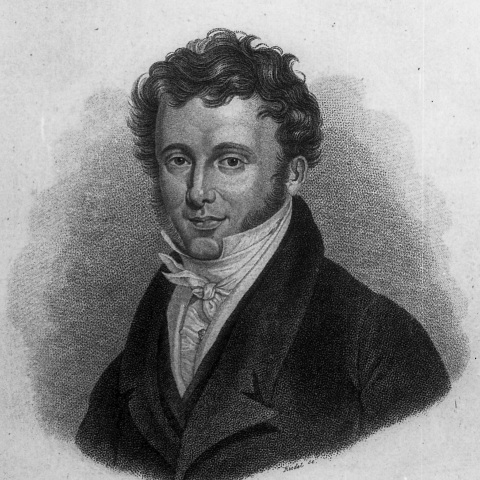Composers / Thomas Tellefsen / Places catalog
Charlotte Thygeson (1811–1872) – a student of Kalkbrenner
Immediately after his arrival in Paris, in 1842, Tellefsen contacted the Norwegian-born pianist Charlotte Thygeson, who became his first teacher in France and until the spring of 1844 oversaw his musical development.
Thygeson had a solid and broad musical education. She had considerable knowledge of the works of Bach, and during a stay in Rome she had met Felix Mendelssohn and his sister Fanny and played Bach with them. Tellefsen described her Bach interpretations thus:
"Charlotte Thygeson played for me three preludes and fugues of [Johann] Sebastian Bach, namely a brilliant prelude and fugue in B major, which you know, the Fugue in C sharp minor (the most exquisite piece of Bach that I ever heard) and another in D minor, all of them so extraordinary that I was utterly thrilled (…) The themes showed so distinctly, in the bass, tenor, alto or treble, the theme was forte, and the other voices piano. That is what having control over one’s fingers should look like”.
Further into the same letter, he describes her as one of the best students of the composer and virtuoso Friedrich Kalkbrenner (1785–1849). As Tellefsen himself did not have sufficient funds to pay for lessons with the famous virtuoso, he took lessons from his student for a fraction of the cost. In this way, he could gain an almost direct insight into Kalkbrenner's methods and playing technique. His friendship with Charlotte Thygeson also allowed Tellefsen to listen free of charge to her classes with other students.
Kalbrenner’s method consisted in developing playing technique by concentrating on the nimbleness of the fingers, in contrast to the stronger playing of Liszt. With time, Tellefsen shifted towards a method of expression which was not entirely contrary to Liszt’s style. The most important thing, he decided, was to use technique consciously to express what you wish to communicate. Moreover, already after the first year spent in Paris, Tellefsen had no doubts that the greatest pianist was Chopin, and that he wanted to learn from him. Kalkbrenner’s method did not satisfy Tellefsen from either the technical or the musical point of view. In February 1843, he wrote to his parents that Kalkbrenner represented “one-sided development – his almost manic focus on developing technique, this drive with which Kalkbrenner strives to stamp out any germ of originality or genius. In my opinion (…) Kalkbrenner is too single-minded – because internal musical education must follow the (…) external one – the technique”.
In the autumn of 1844, Charlotte Thygeson left for Rome. Some years later, she came back to Paris as a highly-paid piano teacher. Tellefsen contacted her still in 1845. Later, her name disappears from his correspondence.
-

Friedrich Kalkbrenner, steel engraving from the first half of the 19th century, Chopin Museum in Warsaw